Wound healing, skin and the immune system – our body cannot function properly without zinc. We will tell you which zinc-containing nuts, fruits and vegetables can be used to prevent zinc deficiency.
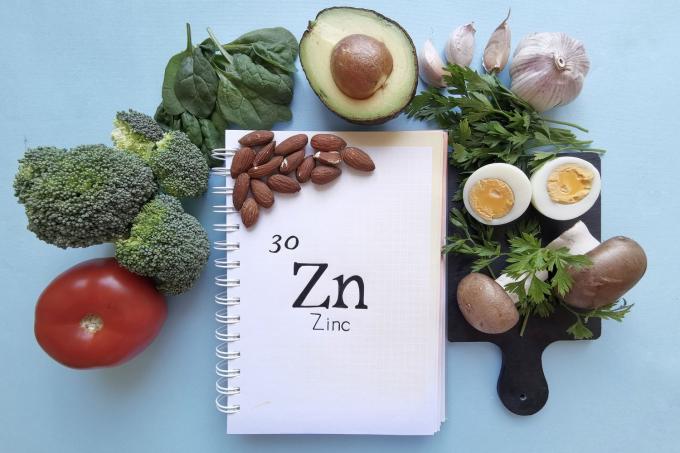
Zinc is indispensable as an essential trace element for our body and fulfills important tasks in the metabolism. As a result, zinc not only affects the appearance of hair and skin, but also areas such as fertility, wound healing and even our immune system. It is all the more important to pay attention to this when it comes to nutrition.
"Contents"
- Fruits and Vegetables High in Zinc: Why is Zinc Healthy?
-
Zinc-rich vegetables and fruits
-
Vegetables high in zinc
- 1. Soybeans (4.2 mg per 100 g)
- 2. Peas (3.8 mg per 100 g)
- 3. Lentils (3.7mg per 100g)
- 4. Peanuts (3.5 mg per 100 g)
- 5. Corn (3.5 mg per 100 g)
-
Fruit with a lot of zinc
- 1. Black currants (0.3 mg per 100 g)
- 2. Strawberries (0.3 mg per 100 g)
- 3. Red currants (0.3 mg per 100 g)
- 4. Bananas (0.21mg per 100g)
- 5. Blackberries (0.19 mg per 100 g)
-
Nuts with a lot of zinc: almonds, walnuts and co.
- 1. Pecan (5.3 mg per 100 g)
- 2. Brazil nut (4 mg per 100 g)
- 3. Walnut (2.7 mg per 100 g)
- 4. Almond (2.2 mg per 100 g)
- 5. Hazelnut (1.9 mg per 100 g)
-
Vegetables high in zinc
Tip: The daily zinc requirement for women is around 7 mg and for men around 10 mg.
Fruits and Vegetables High in Zinc: Why is Zinc Healthy?
Although zinc is only found in the body as a trace element with about 2 to 4 g, it plays a central role in our metabolism: especially in the Cell division, zinc is of great importance, which is why it has a direct influence on the appearance of skin and hair, but also on wound healing supports.
However, the function of zinc in the immune system is particularly important: Zinc is essential for the development of the immune system, as it is required for the development and activation of immune cells. With a zinc undersupply, we are prone to infections and colds because our immune system is weakened. Vegans and vegetarians in particular should pay attention to the selection of zinc-containing vegetables and fruits, since animal foods in particular are considered good sources of zinc.
An oversupply of zinc through food is almost impossible. You can therefore enjoy zinc-rich fruit and vegetables in large quantities without hesitation. With tablets, however, an overdose can occur, which is accompanied by diarrhea and vomiting. For this reason, taking zinc in tablet form should always be discussed with a doctor.
By the way: Some laboratory tests showed that zinc can slow down the multiplication of viruses in cell cultures. So far, however, no evidence of a curative effect in vivo (on the living organism) has been found.
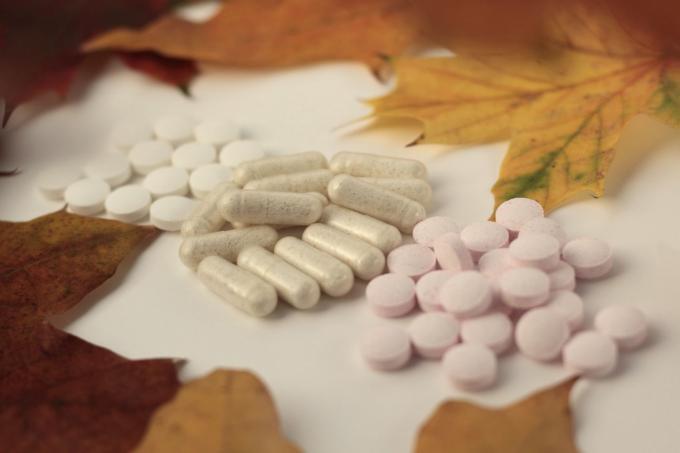
Zinc-rich vegetables and fruits
If you pay attention to the selection of the right types of fruit and vegetables, you can support your immune system. Excess zinc is simply excreted, but some studies confirm a zinc deficiency in one third of all Germans.
Although animal foods are generally considered to be particularly high in zinc, there are also numerous fruits and Vegetables that have a comparable high content of the trace element and so the animal products in nothing inferior.
For comparison: Cheese products contain 3 to 4 mg of zinc per 100 g, milk only small amounts of zinc - less than 1 mg/100 ml - and pork or beef meat between 2 and 5 mg/100 g. Fish and seafood rarely contain more than 2mg of zinc per 100g, only oysters outperform everything else with a whopping 22mg of zinc per 100g of meat.
Vegetables high in zinc
We have summarized five types of vegetables with a lot of zinc for you.
1. Soybeans (4.2 mg per 100 g)
soybeans (Glycine max) are traded as healthy foods, especially because of their high protein content. But did you know that soybeans are also one of the most zinc-rich vegetables? A total of 4.2 mg of zinc are in 100 g of the dried beans, making the vegetable a perfect addition to a balanced diet. In comparison: Cooked beef is considered a good source of zinc, but with 6.1 mg zinc per 100 g it is only slightly higher than soybeans.
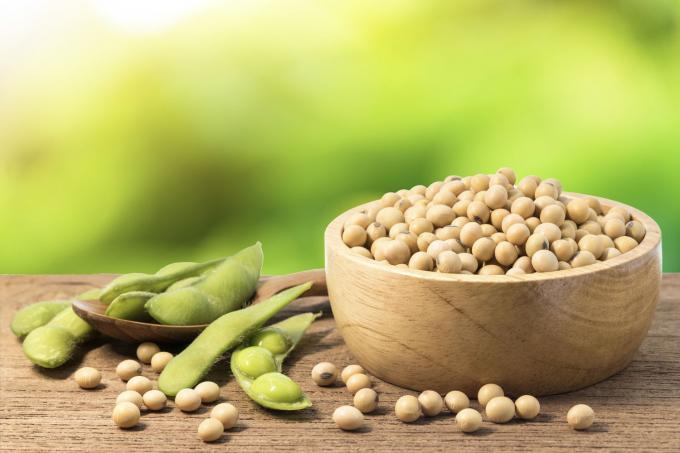
2. Peas (3.8 mg per 100 g)
Peas (Pisum sativum) are not only delicious, but also extremely healthy. The reason for this is the high zinc content that is hidden in the green vegetables: peas contain almost 3.8 mg of zinc per 100 g. In addition, the pea also has a high protein content and contains saponins, which also have an immune-boosting and anti-inflammatory effect.
3. Lentils (3.7mg per 100g)
If you are looking for vegetarian foods with a lot of zinc, look no further than the lentils (Lens culinaris) not over: With 3.7 mg zinc per 100 g, the tried and tested vegetable is particularly well suited to supporting the immune system. In addition, the zinc-rich food scores with a high protein content and is usually more digestible than others legumes like peas or beans.
Tip: Lentils should never be eaten raw due to their lectin content. You should therefore always cook the healthy vegetables before eating them. Incidentally, unlike vitamins, the cooking process has no negative effects on the content of minerals such as zinc.
4. Peanuts (3.5 mg per 100 g)
Despite its name, the peanut (Arachis hypogaea) not with the nuts, but with the legumes (Faboideae) and is with chickpeas (cicer) and lenses related. Like almost all legumes, the peanut shines as an excellent supplier of zinc. With around 3.0 to 3.5 mg zinc per 100 g, the peanut is not only a healthy snack, but also has a significantly higher zinc content than turkey meat (2 mg per 100 g).
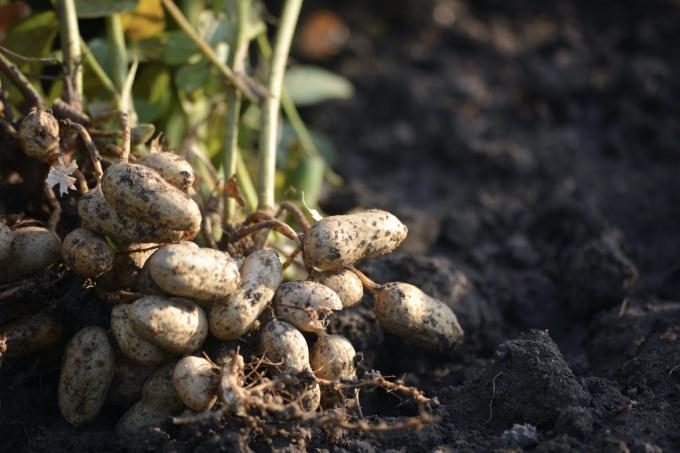
5. Corn (3.5 mg per 100 g)
who in planting corn in the garden, cultivates a good supplier of zinc. Depending on cultivation and processing, the zinc content in corn is between 1.7 and 3.5 mg per 100 g. The biggest factor here is supplying the plant with sufficient nutrients. Through targeted fertilization, for example with our Plantura organic universal fertilizer, you can not only prevent deficiency symptoms in the plant, but also increase the mineral content in the grains.
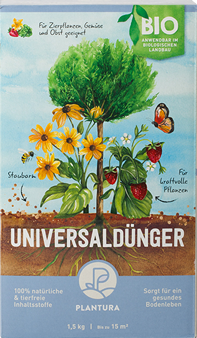
Plantura organic universal fertilizer
effective long-term effect,
good for the soil, harmless for humans, animals and nature
Tip: The absorption of zinc in the body is not only determined by the zinc content in fruit and vegetables, but can also be inhibited or accelerated by other substances. In particular, phytic acid, found in raw vegetables, can inhibit zinc absorption, so always cook vegetables for improved zinc absorption. Coffee and alcohol can also interfere with zinc absorption. The absorption of zinc, on the other hand, is favored by proteins and vitamin C – a combination of zinc-rich vegetables with protein-rich foods and a squeeze of lemon juice is therefore for the Recording ideal.
Fruit with a lot of zinc
Even if fruit is known to contain many vitamins, the zinc content is often a bit sobering. However, there are a few types of fruit with zinc that are definitely suitable for strengthening the immune system.
1. Black currants (0.3 mg per 100 g)
The black currant (Ribes nigrum) is not only a fruit with a lot of vitamin C, but can also have a decent zinc content: around 0.3 mg are contained in 100 g of the fresh berries. In combination with their high vitamin C content, the small berries prove to be a real insider tip for strengthening the immune system.
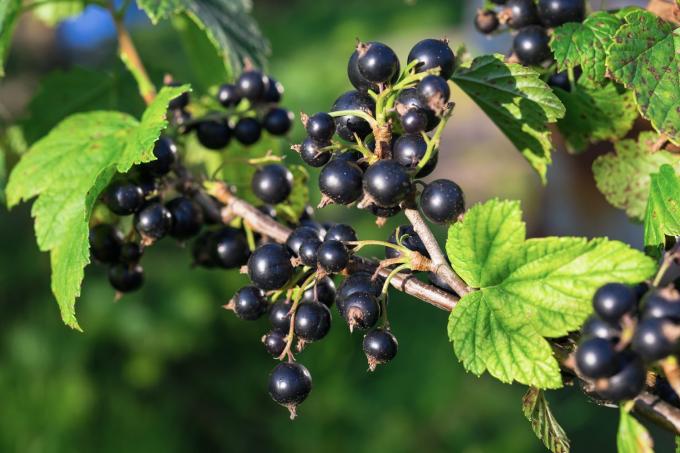
2. Strawberries (0.3 mg per 100 g)
strawberries (Fragaria) not only attract with their sweet taste and their beautiful appearance, but are also extremely healthy. In fact, the strawberry not only contains a little more vitamin C than an orange, but also has a good zinc content with 0.3 mg zinc per 100 g. So you can eat the sweet fruits without a guilty conscience and even do something for your immune system.

3. Red currants (0.3 mg per 100 g)
Like its close relative, the black currant, the red currant (Ribes rubrum) a good addition to any diet. In addition to its high vitamin content, the red currant convinces with its good zinc content of 0.23 mg to 100 g.
4. Bananas (0.21mg per 100g)
bananas (Musa) are not only delicious, but also shine with their good ingredients: The content of minerals such as potassium, magnesium and iron is particularly high. But the banana can also convince with its zinc content - 0.21 mg zinc per 100 g are in the banana.
tip: Additional iron-rich vegetables we have put together an overview for you.
5. Blackberries (0.19 mg per 100 g)
blackberries (Rubus sect. Rubus) have been considered medicinal plants since ancient times. In fact, the black berries are real vitamin bombs. But their zinc content is also impressive: with 0.2 mg zinc per 100 g, blackberries are one of the fruits with a lot of zinc.
Nuts with a lot of zinc: almonds, walnuts and co.
It is well known that nuts are healthy. In fact, the crunchy delicacies not only contain many healthy fatty acids: Nuts are also an important supplier of zinc. In the following, we reveal which nuts contain a particularly high amount of zinc.
1. Pecan (5.3 mg per 100 g)
Native Americans value the pecan nut (Carya illinoinensis) for a long time and the nut is always popular with us too. Rightly so, after all, the pecan nut is not only delicious, but is also full of valuable minerals. The nut scores with 5.3 mg per 100 g because of its high zinc content. 150 g of the delicious nut thus cover a person's daily zinc requirement.
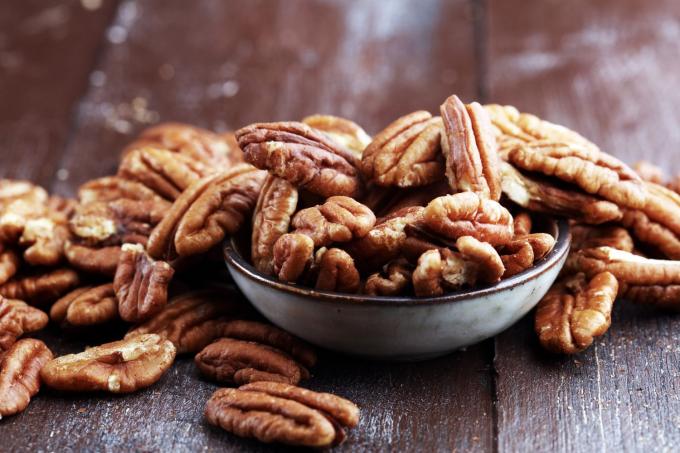
2. Brazil nut (4 mg per 100 g)
The Brazil nut (Bertholletia excelsa). In Germany, the nut is eaten not only because of its taste, but also because of its high proportion of healthy, unsaturated fatty acids. But its zinc content should not be ignored either: with 4 mg per 100 g, the nut supports the immune system with additional zinc.
3. Walnut (2.7 mg per 100 g)
Especially in winter the walnut (Juglans regia) a popular snack for many. In fact, the walnut is not only delicious in winter, but also very healthy: With its high With a zinc content of 2.7 mg per 100 g, the walnut supports the immune system and thus protects us from infections. In addition, the walnut contains a lot of vitamin E, which is responsible for cell protection.
4. Almond (2.2 mg per 100 g)
almonds (prunus dulcis) are among the most popular nuts in Germany. But it's not just their delicious taste that makes the nut a welcome change on the table Menu: Due to their high vitamin E content, the nuts are a good support for the Immune system. They also impress with a lot of zinc, because this is also abundant with a content of 2.2 mg per 100g and supports the immune system.
5. Hazelnut (1.9 mg per 100 g)
Small but mighty – the spherical hazelnut (Corylus avellana) is full of important nutrients despite its small size. In addition to its high content of unsaturated fatty acids and vitamin E, the nut is particularly impressive because of its zinc: it contains 1.9 mg per 100 g.
By the way: How much zinc we take in depends not only on what we eat, but also on the combination of foods. Zinc from animal products is better absorbed. Coffee, alcohol, cigarettes, but also a lot of calcium and phosphorus, which is contained in soft drinks, inhibit absorption.
Not only zinc, but also vitamin C contributes to the maintenance of a healthy immune system. You can find out which vegetables are particularly suitable for supplying vitamin C in our article Vegetables with a lot of vitamin C.
...and receive concentrated plant knowledge and inspiration directly in your e-mail inbox every Sunday!
